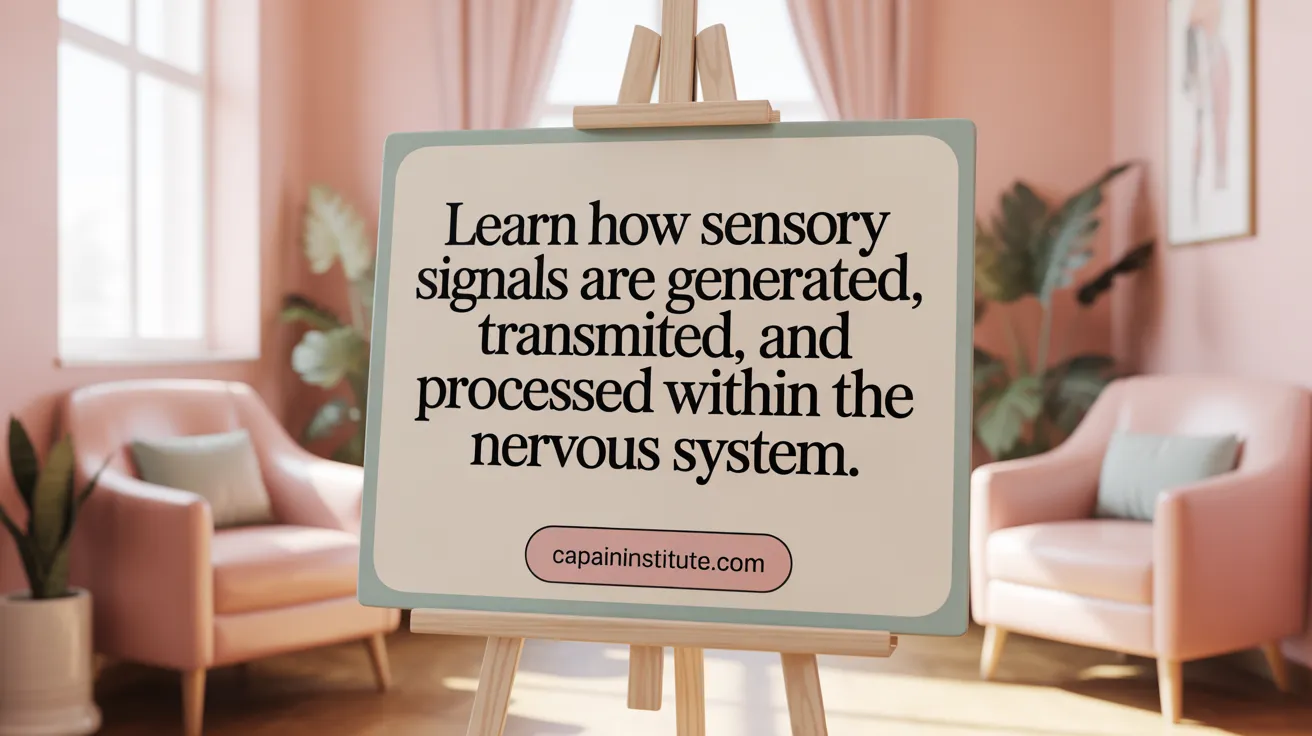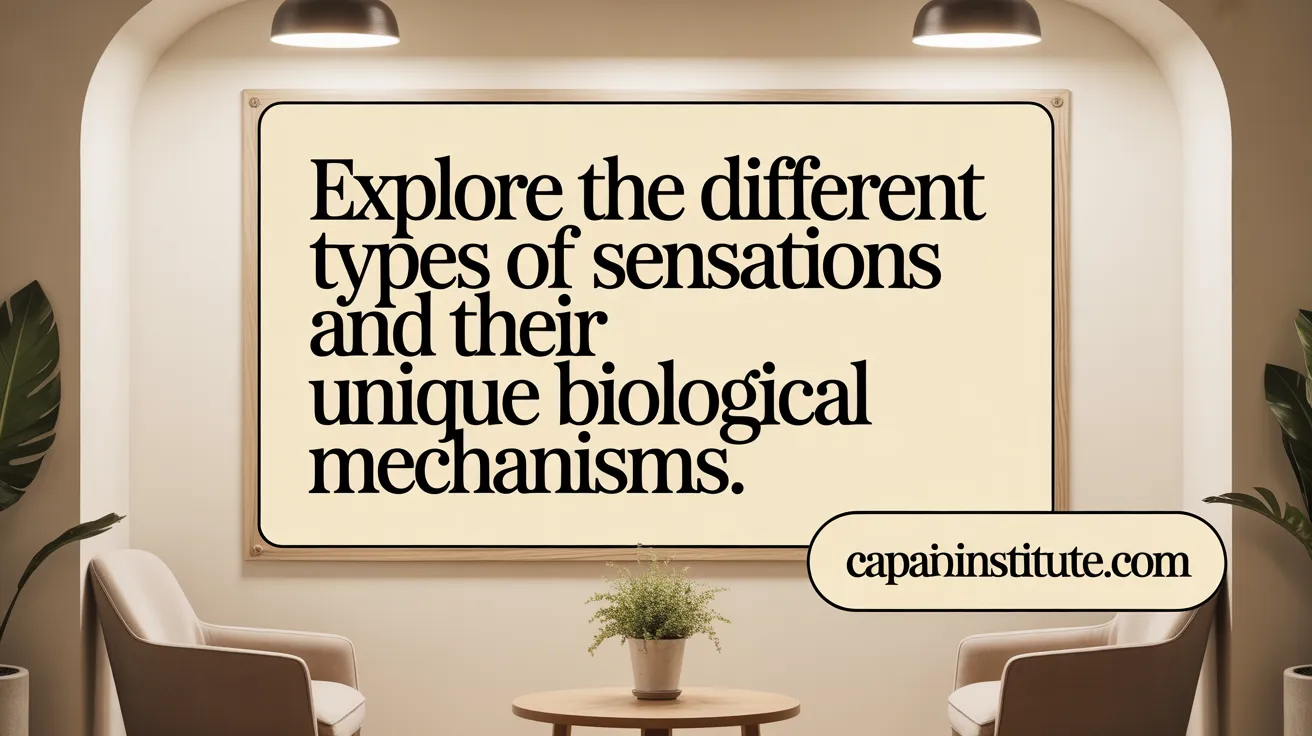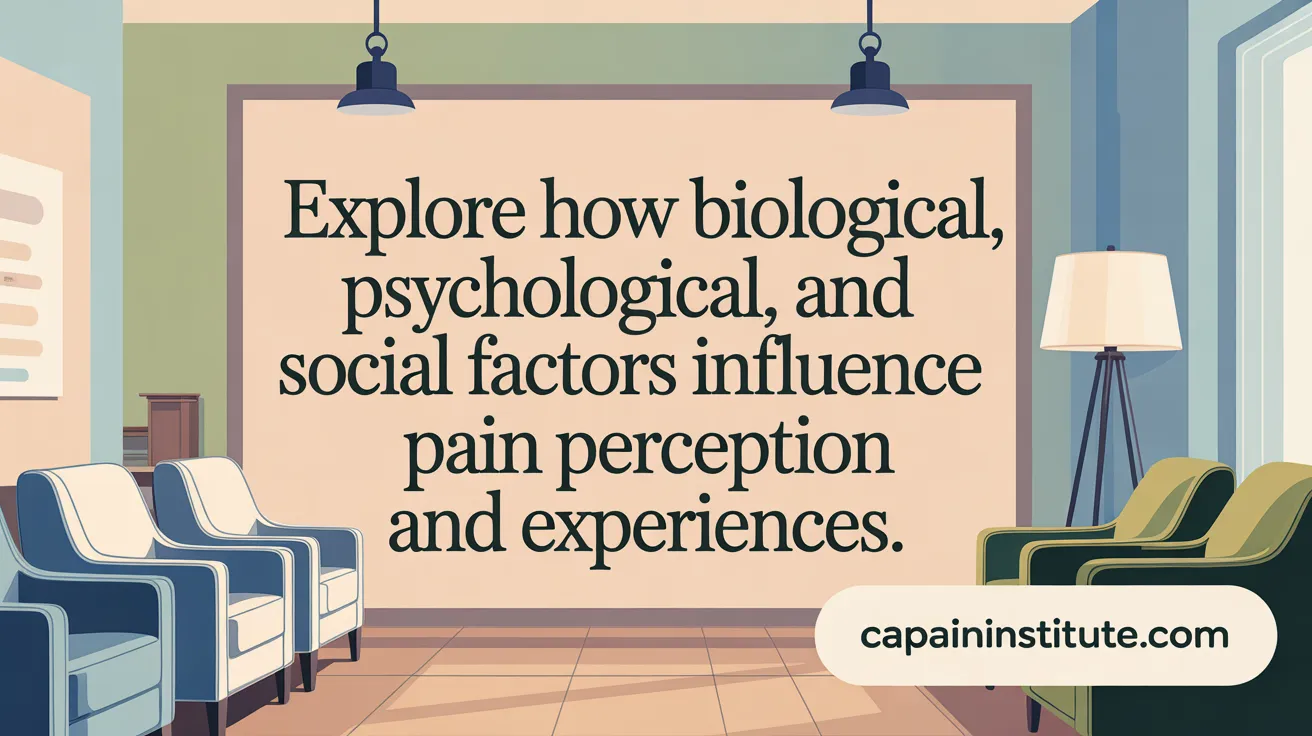The Complex Journey of Pain Through the Nervous System
Pain is a multifaceted experience essential for survival, alerting us to potential or actual tissue damage. Far from being a simple sensation, pain arises from sophisticated physiological processes involving specialized receptors, nerve pathways, and intricate brain circuits. This article unravels the sequence of events—from detection to perception—shedding light on how the nervous system identifies, conveys, and interprets pain signals. Understanding these mechanisms helps explain the variability of pain experiences and informs advances in effective pain management.
<!-- VIDEO:eyJsaW5rIjoiaHR0cHM6Ly93d3cueW91dHViZS5jb20vd2F0Y2g/dj01YzhtYUZBaHFJYyIsImltYWdlVXJsIjoiZGF0YTppbWFnZS9qcGVnO2Jhc2U2NCwvOWovNEFBUVNrWkpSZ0FCQVFBQUFRQUJBQUQvMndDRUFBa0dCd2dIQmdrSUJ3Z0tDZ2tMRFJZUERRd01EUnNVRlJBV0lCMGlJaUFkSHg4a0tEUXNKQ1l4Sng4ZkxUMHRNVFUzT2pvNkl5cy9SRDg0UXpRNU9qY0JDZ29LRFF3TkdnOFBHamNsSHlVM056YzNOemMzTnpjM056YzNOemMzTnpjM056YzNOemMzTnpjM056YzNOemMzTnpjM056YzNOemMzTnpjM056YzNOLy9BQUJFSUFGTUFsQU1CSWdBQ0VRRURFUUgveEFBYkFBQUNBZ01CQUFBQUFBQUFBQUFBQUFBQUJBRURBZ1VHQi8vRUFEa1FBQUlCQXdJREJRVUhBd1FEQUFBQUFBRUNBd0FFRVNFeEJSSlJFeUpCWVhFVU1vR1JvUVpDVXJIQjBmQVZNK0VsWXBMaUZpTWsvOFFBR1FFQkFBTUJBUUFBQUFBQUFBQUFBQUFBQUFFQ0JBVUQvOFFBSVJFQkFBSUNBUVVCQVFFQUFBQUFBQUFBQUFFQ0F4RWhCQklUTVVGU1VTTC8yZ0FNQXdFQUFoRURFUUEvQVBjQlUwVVVCUlJSUUZGRkZBVVVVVUJSUlJRS1hCYVdkTGRXS3J5ODhqS2NIR3dBUGhuOURXWXM0TWYybExmaU9yZlBlb25nWnBSTEUzTElCanlJODZqTjF0aFArUDhBMm9LL2FCYUYwblppZ1htUnNGbUl6Z2pBMUpCSTljaXJiVzlodWlSQTNOamZRank4UjVWRUZ1d203YVppemdGVnlmZEJ4bkdnNkNtY1VHdnVMazIxL0t3Z21tekRIM1lseVJxOVIvVlRqUDhBVHIvekhZLzVwaFIvcVRuckN2NXQrOU5VRkZ0T2JoQ3hnbGgxOTJRQUg2R3JHRloxQm9GeU5hS3RLNjBWZmFTbkY3K1RoOFVMeFdrdHp6eWhHRVc2TGdrc2ZRRDQ2Q3RSL3dDVHppT1BuNFZOMnJzcWlOQzJtUnVTVkF4blQrRFBRVHpyRTZweXM3c0N3VlJyZ1l5ZnFQblNFdDBXTG1GMk12TXBoanpqdEYwenA2NUJQaFZFRTdyN1JYTURLRjRSY3lyMmFzV1RKR1NBY0E0OE9ZYjRwM2gzRkpieTZlSjdTU0ZWWEk3VElidzNHTk01T05mdW1uNEpWbGo1bHowSU80UFExRHp4bzRRdDNqajY2Q2d1b29vb0NpaWlnS0tLS0JlZVNUdFVoaHdHWVpKYjdvNit0UVZsSGQ5bzE4NHhXTXBhRzdNMk9aSFFLdzJ4Z2svclVtYU5qbkVtZW5LYUNZNVhTVVJUNEpiVkhBeHplWHIvQURyVEdhUWRqZU1pQlNFUmlXYm0xT2hHaEIwM3BmMlAvd0Jra1RMUEV1NlNlMUVnbllEeW9IeVIvVUY4NFQ5Q1AzcGpOY3A5b1R4VzFqU2VKNCtSUjJZS1NrT2NrZFI1RDYxcGJxZS9WQTE4dHhJcDBISkl6RWZBVjUyeVJWcXhkTk9TdmRFdlJjMFpyelcydjB4M0w2OGhiOEJsWlcrUjJyTWNRNHFzb2xzK0p5VE1tcGhsUE1DT2hxbm5qN0MwOUZiNUwwWTBWejlsOW9ySzV0MWVXNVMzazJlS1ZzRlQrbzg2Szk0bXY5WnB4Mmo0MnZFK1pFV2VGMVdlTU1FRERJZlAzY2VlQnQwNlVsbFFpeTJrNWxWU1dKYjdyTm5mb0RuVWVCeDBweS9EZTFXdlpFQ1h2anZIVGx4cjhjZ2ZXcUk0WkpMMUZ2REczSUN5Y2k3N0FnL1E0Mno2VktpeU80alNVVEwyaGlrVUZtTWJZQkd4T21OdEQ2Q2lVaG9idHdNNGRYRGVnVWluSGtWTTV6c1Q2QVZWSGJJaXlCZjdjbTZuOVBoVUJxaXFMTm1hM1VPY3V2ZFk5U05DYW00dVliWlEwOGlvcE9BV09OYUM2aWxvcisxbGNKSFBHekh3RFV6UUZGRlZ5VEpHNm96QU0ydy9ud29MTVZqeUwrRWZLcHpwVTBGVVdoY2Y3cXA0ZzdMRmhVTEE3a2VGWGU3TjVNS3NJMHFJUzh1NDV4U1ZuZ2xMTXZMS0U5blVkZE5lcEZNUmNUbWxVR2JDaFY1UW9QMTlhNjNpdHNrY2hrNUYxOGNhMTU2c25hWGI5bjduT1NQSVZtelJOWTN0MXVueVZ2eEVhZEJOOXNvQi93RFB4Ymd6WFVJd08xakt5Wjh5clkraE5UWjhWK3hkd1d0N0NlTGg4K25kTVpRTDhQZHJqdnROY1hQQ2JZWE5yeWRuekJaV1laN01INzJQSHBTa05tL0VPU2F4czVUSElPYVI3Z2N2TWROZGZTb2k4ekhQS3R1bnJFLzVtWWQ5SndJWFR0TEZmV0VpRTRETEorZXU5RmFLMHQ1SUlSR1Z0QUFkQUYySHlvcU82djVWOFYvMDlVdVlJN2hPV1FiSElJMElQVUh3TmF3OWx3eEc5cVpFaUowbkM4b0kvQ2NiSDAzNlpyYm10UzNEWHVibG00Z3huaVRKaVhZS1NUcmdlSThEOGZUWTVpZUUzbzRqSGM5cENZWkZjbzBiSHZCY2FlbWhyWXE0amlIYXVnSVhVazRGY0p4bVM5NEp4eVc0VjJidEFHRHFCM3hnQWhoNDdlSDByWmNFKzBFbkV1S0l0MUhFa2NpOHNhZ1p3dzF6bnovYXFSZU42bHV2MFZ1enlVNXJyYnBiRjFraVp3ZDNZbkl3UnIrMkt4a3RKR2RtVzhtVU5udWdMZ2ZTdFdMbVlJSmdUN1JOazhtU29VWTBKT294OE0vS3JSeE84dDViWDIrQzNTMm1YTFhJbDVRalkwWERhbk5YWVRjdHFaSk81ZXl4bkowVUp2OEFFZUZOd3FVakNzNWNqN3gzTkxQMlQyb2tpbHhHUmxXWFVITzMxcXRyeVlSSVZqWERFS1dJSjd4T1BkSG40MVR1MU9wVHBzQ3dBemtWcVhacjY1SmpqN25aNDFKR1FkaWZrY0Q1OUt1YUM2TVVTU3lkdGhTSmNEbExuVFhHM1hTaTNrV09WbUJKU1YrUmd3d1kyeG9ENUg4eU53UlUreFdzOXdManNDV0FCd3pZNXRkd0I4T3ZscFRvaUxyL0FINWZNWlg5cVh0bkJ1Wm9TQUhTUXNXNmc2L2tSOHF5Y1BHeEF6SWkrK2ViQlA3MVBvWXl5UGJzajVhU0xtMUpHbzBPMk4vNTZVOHJCZ0NDQ0Q0aWtPSTNjZHRFc3JrS0VZYU1lWHhINlpwbXdCRnBHQ01kRi9DTTZENERTZ3c0bGJpNHRKRjhjYUd2S2JuaDEvdzdpSmZrN1czWVlMeCtIcUs5Z08ydGNieGlMRTBxSHpGUmFrV2psNzRNazFuVU9jUExkUWdFQWdqQnpxQ0tXRGNtVTFEcnRydUt4dHBIZ0ppYjNEN3JWbTNLcDVtM3JCTVREcndzUWdEM2QvT2lxV2xVbmVpbzVPSHNGUWFCVTEwbkFhWDdTOEtmaXRrc1VBakVxdUNIZk9nOGExRm45a3A3ZWFPNWx1MVZvMkRsWWt5U1I2MTJCMnJVWHZFWjdhNE1Va25ENDg1S0NTVmd4QjkzSXhwcnBWZXlKbmJUajZ2TGp4K09zOE1Ha2lrdVVmMmVKUTR5Q3piblhRNDBCNjcrOTYxVlBkTHhlZTJ0NCtHdmMyaFpqUExMbU5ZamdnYUVkL3gyOHF0dHVKSzAvTTl4WUZCbkx4azgyUEFmUCtDdGxiM2x2Y0hFTXF1ZGRCNVkvY1ZabUp5OE1IWmRrWjNFZmFGd0dKWTVQaGtuYXBqaGtTeGxVWUxJUXk4eEp4akc1SGpwbjFyWXlSaVRHU2NEb2FsVkNqQTBGVjFNeW40MHA0dEtTZ1NTMncvVkpSNjY0MCtOUEpDODhTeTgwZk82QVAzY3BKMDBPdjhBUEduY0NnREF3S3NocXA3Q1NSZ3lyMlVvUDl4WmlTQjVBalg0N1ZiSEhkUnhoUTJRRGtrcDczcnIrWCtLYXVJRE1GQWxrancyY3h0alBsVlVkcExHVG03bWNGZVh2WTA4d1FONkJhV3dhNVlHVjJBVnVaTWZkSTJJL3dBMW5MZDNkc0FEWmN5akE1eEtGQjE2SFlmV3I0YlNTT1VTTmR6eUFmY1lqRzNrS1paRmRjT29JNkVVR3JUaTAwajhpMkxGaWNMeXp4a0h6R3Y2VnFlTkxLK0pwWVdpTDU3aDF4WFRSV3R2Q1FZb0kwSS9Db0ZZWDFxbDFidkc0M0doNkdwV3JPcGVVSzQ1MmpiY0dvTEx0a1ZoeCtON0MvT21qTnFmT2wwbldRYmIxaHlWbUpkakhiY0tycWZzcGVWVkIwb3BlNEhOSmtBN1ZOZWEyM3VxMW5SUlhSbHd4V0RBRTVJQk9lbFJSUUhaUjgrZVJjNDN4VWhWQjBVRDBGUlJRV1VDaWlnS0tLS0Fvb29vQ2lpaWdLS0tLRHpUN2ZJb251Y0RvZnlya0xBa3lFRTZaTkZGZUdkMHVtOUdKQU9hb29vcksxdi8yUT09IiwidGl0bGUiOiJQQUlOISBQaHlzaW9sb2d5IC0gVGhlIEFzY2VuZGluZyBQYXRod2F5LCBEZXNjZW5kaW5nIFBhaW4gLi4uIiwic25pcHBldCI6Im1vZHVsYXRpbmcgbm9jaWNlcHRpdmUgc2lnbmFscy4gVGhpcyB2aWRlbyBvZmZlcnMgYSBjbGVhciBicmVha2Rvd24gb2YgaG93IHBhaW4gaXMgdHJhbnNtaXR0ZWQsIHBlcmNlaXZlZCwgYW5kIHJlZ3VsYXRlZCBpbiB0aGUgbmVydm91cyBzeXN0ZW0gLi4uIn0= -->Physiological Processes Underlying Pain Perception and Transmission
What are the physiological processes involved in pain perception and transmission within the nervous system?
Pain involves several intricate steps within the nervous system, starting from the moment harmful stimuli are detected by specialized receptors. These receptors, called nociceptors, are located throughout the skin, muscles, joints, and internal organs.
Nociceptors act as pain sensors, responding to mechanical injury, extreme temperatures, or chemical changes. When activated, they convert these stimuli into electrical signals through ion channels like TRPV1. These electrical impulses are then transmitted along peripheral nerves to the spinal cord.
Within the spinal cord, the signals reach the dorsal horn, where they are processed and relayed by nerve fibers called Aδ and C fibers. These fibers carry the signals upward through specific pathways, predominantly the spinothalamic tract, toward the brain.
Once in the brain, multiple regions, including the thalamus, somatosensory cortex, limbic system, and prefrontal cortex, interpret these signals as pain. This complex network of neural pathways and neurotransmitters, such as glutamate and endogenous opioids, modulate the sensation, influence emotional responses, and shape pain perception.
Overall, pain perception involves a cycle of transduction, transmission, modulation, and perception—each stage contributing to how pain is experienced and processed. Understanding these processes is crucial for developing effective pain management strategies.
Overview table of the physiological processes
| Process | Main Function | Key Components | Location / Pathway |
|---|---|---|---|
| Transduction | Converts harmful stimuli into electrical signals | Nociceptors, ion channels (e.g., TRPV1) | Skin, muscles, organs |
| Transmission | Sends signals from nerves to spinal cord and brain | Peripheral nerves, dorsal horn, Aδ & C fibers | Spinal cord, spinothalamic tract |
| Modulation | Regulates pain signals through inhibition or facilitation | Endogenous opioids, neurotransmitters | Brainstem, descending pathways |
| Perception | Interprets and consciously experiences pain | Thalamus, cortex, limbic system | Brain regions involved in sensory and emotional processing |
Understanding these steps underscores the complexity of pain and guides personalized approaches to its treatment.
The Collaborative Role of Nerves, Spinal Cord, and Brain in Pain Detection and Interpretation
How do the nerves, spinal cord, and brain work together to detect and interpret pain signals?
Pain detection begins when specialized nerve endings called nociceptors in tissues respond to harmful or potentially damaging stimuli such as extreme heat, mechanical injury, or chemical changes. These nociceptors generate electrical signals that travel along peripheral nerves, carrying information about tissue damage.
The signals then reach the spinal cord, where they are processed in a region called the dorsal horn. Here, the incoming pain signals can be modulated—either amplified or dampened—through neural mechanisms involving neurotransmitters and local interneurons. This processing influences how much pain information ultimately progresses to higher brain centers.
From the spinal cord, the pain signals ascend through specific pathways to reach the brain. The primary pathway involved is the spinothalamic tract, which transmits localized, sharp pain signals. Another pathway, the spinoreticular tract, carries deeper, duller pain information relating to visceral or diffuse pain.
In the brain, the thalamus acts as an essential relay station, sorting and directing incoming pain signals to various regions. The somatosensory cortex interprets the signals to determine the precise location, intensity, and nature of the pain. At the same time, the limbic system interprets the emotional and distressing aspects of the pain experience.
Importantly, the brain exerts control over pain perception through descending pathways originating from areas such as the prefrontal cortex, hypothalamus, and periaqueductal gray. These pathways can inhibit or facilitate pain signals, influencing how pain is ultimately perceived and responded to.
This integrated functioning of nerves, the spinal cord, and the brain ensures a comprehensive detection, interpretation, and emotional response to pain. It also provides the biological basis for how psychological factors—such as attention, expectation, or emotional state—modify pain experience, highlighting the intricate relationship between physical signals and mental processes.
Mechanisms of Pain Signal Generation, Transmission, and Processing

How are pain signals generated, transmitted, and processed in the nervous system?
Pain begins with the activation of specialized nerve endings called nociceptors, which are sensitive to harmful stimuli such as extreme temperatures, mechanical injury, or chemical changes. When nociceptors detect these damaging or potentially damaging stimuli, they undergo a process called transduction. This involves the opening of specific ion channels, such as TRPV1 channels for heat, allowing ions like sodium and calcium to enter the nerve endings.
The influx of ions causes depolarization, leading to the generation of electrical impulses known as action potentials. These impulses are then propagated along afferent nerve fibers—Aδ fibers for quick, sharp pain, and C fibers for dull, aching pain. This conduction transmits the pain signals from the periphery toward the central nervous system.
Once the impulses reach the spinal cord, they synapse at a region called the dorsal horn. Here, neurotransmitters such as glutamate and substance P facilitate the relay of signals to second-order neurons. These neurons then ascend through specific pathways, mainly the spinothalamic tract, which carries pain information to higher brain centers.
The signals are processed in various brain regions including the thalamus, somatosensory cortex, limbic system, and prefrontal cortex. These areas interpret the location, intensity, and emotional significance of the pain.
Additionally, the nervous system features mechanisms to modulate pain transmission. Descending pathways from the brain can enhance or inhibit incoming signals through neurotransmitters like endogenous opioids, norepinephrine, and serotonin. This modulation explains why pain perception can vary between individuals and situations.
In summary, pain signals are generated through the activation of nociceptors, transmitted via nerve fibers to the dorsal horn, relayed upward through neural pathways, and processed by the brain with the capacity for modulation at multiple levels, shaping the subjective experience of pain.
Diverse Types of Pain and Their Distinct Mechanisms

What are the different types of pain and their underlying mechanisms?
Pain is a complex experience that can be categorized into different types based on its origin and mechanisms. The main types are nociceptive, neuropathic, nociplastic, and mixed pain, each involving distinct biological processes.
Nociceptive pain is caused by activation of pain receptors called nociceptors, which respond to harmful stimuli like tissue damage or inflammation. This type of pain is often sharp, localized, and serves as a protective mechanism. For example, a cut or a burn activates nociceptors in the skin, transmitting signals via peripheral nerves to the spinal cord and ultimately to the brain.
Neuropathic pain results from damage or disease affecting the somatosensory nervous system itself. Nerve injuries can cause abnormal nerve activity, leading to sensations such as burning, shooting, or tingling. Conditions like diabetic neuropathy or shingles exemplify neuropathic pain, involving nerve damage that causes spontaneous pain or heightened sensitivity.
Nociplastic pain involves altered processing within the central nervous system (CNS), without clear tissue or nerve damage. It is often widespread and characterized by heightened sensitivity to pain, a phenomenon called hyperalgesia. Conditions such as fibromyalgia are common examples and involve neuroplastic changes—brain’s ability to reorganize and change functions—that amplify pain signals.
The mechanisms underlying these pain types include inflammation, nerve injury, and changes in neural pathways. Peripheral sensitization amplifies nociceptive signals at injury sites, while central sensitization involves increased neuron excitability within the spinal cord and brain. These processes involve the release of chemical mediators like prostaglandins, cytokines, and neuropeptides, which enhance or prolong pain signals.
Understanding these differences helps tailor pain management strategies. For instance, nociceptive pain might respond well to anti-inflammatory drugs, whereas neuropathic pain often requires specific nerve-targeted medications. Nociplastic pain may benefit from therapies aimed at modulating CNS processing, such as cognitive-behavioral therapy or neuromodulation.
| Pain Type | Origin | Characteristics | Examples | Underlying Process |
|---|---|---|---|---|
| Nociceptive | Tissue damage or inflammation | Sharp, localized, aching | Cuts, burns, arthritis | Peripheral activation, inflammation mediators |
| Neuropathic | Nerve damage or dysfunction | Burning, shooting, tingling | Diabetic neuropathy, shingles | Abnormal nerve activity, neuroplastic changes |
| Nociplastic | Altered CNS processing | Widespread, hypersensitive | Fibromyalgia | Central sensitization, neuroplasticity |
Pain mechanisms are influenced by both molecular and cellular processes, involving immune responses and neurochemical mediators like glutamate, prostaglandins, and endogenous opioids. Recognizing these differences informs effective, personalized pain treatments.
Insights from Current Research on Pain Mechanisms and Modulation
What insights does current research provide on pain mechanisms and modulation within the nervous system?
Recent studies have significantly advanced our understanding of how pain operates within the nervous system. Researchers now recognize that pain involves a complex network of biochemical and neural processes. At the core are neurotransmitters such as glutamate, which excites pain pathways, and neuropeptides like calcitonin gene-related peptide (CGRP) and brain-derived neurotrophic factor (BDNF), which play roles in sensitization and neuroplasticity.
Specialized ion channels, including TRPV1 (responsible for thermal pain detection) and Nav1.7 (a voltage-gated sodium channel crucial for nerve impulse conduction), are vital in transmitting and amplifying pain signals. Mutations or dysfunctions in these channels can lead to altered pain sensitivity, either increasing vulnerability to chronic pain or causing congenital insensitivity.
In addition to neural elements, immune components like inflammasomes, cytokines, and prostaglandins contribute to inflammatory pain by promoting nerve sensitization. These interactions between immune cells and neurons—known as neuroimmune interactions—are now understood to be pivotal in both acute and chronic pain conditions.
Structural and functional changes in the brain, known as neuroplasticity, also influence pain perception. Advances in neuroimaging have revealed altered activity in regions such as the somatosensory cortex, limbic system, and prefrontal cortex in people with persistent pain. These changes can enhance pain signals or impair endogenous pain inhibition mechanisms.
Progress in molecular techniques and neuroimaging has led to identification of biomarkers associated with chronic pain states. These discoveries facilitate the development of personalized treatment approaches tailored to individual neurobiological profiles.
Furthermore, the field has uncovered the importance of descending pathways originating from brain areas like the periaqueductal gray and prefrontal cortex, which can inhibit or facilitate pain transmission depending on psychological, environmental, and neural factors.
Emerging therapies include gene therapy targeting specific ion channels, neuromodulation techniques such as deep brain stimulation or transcranial magnetic stimulation, and modulation of microbiota to influence systemic inflammation and nerve function.
Overall, current research highlights the multi-dimensional nature of pain, emphasizing interactions among neural, biochemical, immune, and psychological systems. These insights foster hope for more effective, targeted interventions that address the underlying mechanisms of pain, especially in chronic conditions.
Neurobiological and Biopsychosocial Influences on Pain Perception

How do neurobiological and biopsychosocial factors influence pain perception and experience?
Pain perception is shaped by a complex interplay of biological, psychological, and social factors.
From a neurobiological perspective, specific neural pathways process different aspects of pain. The spinothalamic pathway primarily transmits localized, sharp pain sensations, while the spinoreticular pathway carries dull, aching, and visceral pain signals. Within the brain, regions such as the somatosensory cortex identify the pain's location and intensity, while the limbic system and prefrontal cortex contribute to emotional and cognitive evaluations.
Persistent pain often involves neuroplastic changes like central sensitization, where the nervous system becomes hypersensitive, amplifying pain signals even without ongoing tissue damage. These changes reflect the brain's ability to adapt and reorganize, influencing chronic pain conditions.
Emotional and cognitive states significantly modulate pain perception. Anxiety, depression, and catastrophizing (exaggerated negative thought patterns about pain) activate limbic system circuits, particularly the anterior cingulate cortex and amygdala. These regions enhance feelings of distress and unpleasantness, intensifying the pain experience.
Conversely, positive emotions and beliefs can activate endogenous pain-relieving systems. The limbic system can trigger the release of natural painkillers like endorphins and dopamine, reducing perceived pain.
Social factors also play a crucial role. Social support can buffer pain by providing emotional comfort, while social rejection or isolation can exacerbate pain sensations. Cultural expectations and beliefs influence how individuals interpret and respond to pain, affecting coping strategies and treatment outcomes.
The biopsychosocial model synthesizes these influences, emphasizing that pain is not solely a sensory experience but a dynamic process involving neural mechanisms, emotional states, beliefs, and social context.
This comprehensive understanding highlights the importance of addressing multiple aspects in pain management, from neurological pathways to emotional well-being and social environment.
| Aspect | Description | Influence on Pain |
|---|---|---|
| Neurobiological Pathways | Spinothalamic, spinoreticular, cortical processing | Determines sensation and emotional aspect of pain |
| Neuroplasticity | Central sensitization and reorganized neural circuits | Maintains or exacerbates chronic pain |
| Emotional Modulation | Anxiety, depression, catastrophizing | Amplifies or diminishes pain perception |
| Social Factors | Support, rejection, cultural expectations | Alters emotional responses and pain interpretation |
| Model of Pain | Biopsychosocial | Integrates all influences for holistic understanding |
Overall, pain is a subjective experience emerging from a network of neural circuits and influenced by psychological and social contexts. Recognizing these factors helps in developing comprehensive, individualized pain management strategies.
The Relationship Between Pain and Brain Function: Mechanisms and Management

How does the brain process pain, and how do mechanisms of pain management influence this?
Pain is not just a physical sensation; it is a complex experience involving multiple brain regions. When tissue damage or noxious stimuli activate nociceptors — specialized nerve endings that detect harmful heat, mechanical injury, or chemicals — signals are carried through peripheral nerves to the spinal cord. From there, they ascend to the brain via pathways like the spinothalamic tract.
In the brain, regions such as the thalamus, somatosensory cortex, limbic system, and prefrontal cortex work together to create the sensory, emotional, and cognitive dimensions of pain. Sensory areas help localize pain, while limbic structures associate pain with emotions like distress or fear. The prefrontal cortex is involved in planning and evaluating pain, integrating past experiences, beliefs, and expectations.
Chronic pain involves more than persistent signals; it reflects changes in brain circuitry—altered connectivity among key regions, neuroplastic changes, and heightened sensitivity. Structures like the hippocampus, nucleus accumbens, and prefrontal cortex show altered activity, sustaining the perception of pain even without ongoing tissue injury.
Pain management strategies directly influence brain processes. Pharmacological treatments, such as opioids, activate endogenous pain-inhibiting pathways, reducing the perception of pain. Behavioral therapies, including cognitive-behavioral therapy, help modify emotional responses and dysfunctional beliefs about pain, decreasing its emotional impact.
Neuromodulation techniques like transcranial magnetic stimulation aim to alter neural activity in specific brain regions, potentially restoring normal circuit function. Additionally, neuroimmune interactions—where immune signals influence neural activity—play a role in maintaining or alleviating chronic pain.
Understanding these interconnected mechanisms has expanded the approach to treating pain, emphasizing not only reducing sensory signals but also addressing emotional, cognitive, and neurochemical factors. This holistic perspective guides the development of personalized therapies that aim to restore normal brain function and reduce suffering.
Additional Perspectives: Behavioral Responses, Reflexes, and Pain Variability

How does the reflex arc and withdrawal responses work?
The reflex arc is a simple, automatic pathway that causes immediate muscle contractions to protect the body from injury. When nociceptors detect harmful stimuli, such as extreme heat or sharp pressure, signals quickly travel through peripheral nerves to the spinal cord. Here, the signal is processed in the dorsal horn, and a direct relay to motor neurons causes muscles to contract, resulting in rapid withdrawal from the source of pain. This reflex occurs without the delay of involving the brain, providing a quick protective response.
Why does pain tolerance vary among individuals?
Pain tolerance is highly individual and can be influenced by genetic, psychological, and social factors. Some people can endure intense pain due to differences in nerve sensitivity, pain receptor activity, or the brain’s pain-modulating systems. Past experiences, emotional state, cultural background, and current environment also play a role. For example, individuals with positive attitudes towards pain or those who view pain as a challenge tend to tolerate it better.
How do attention, expectation, and past experiences affect pain perception?
The brain’s interpretation of pain is shaped by what we focus on, our expectations, and previous experiences. Paying close attention to pain can amplify its perception, while distraction can lessen it. Expectation of pain—such as anticipating discomfort—can increase perceived severity. Conversely, previous positive experiences with pain relief can enhance confidence and reduce sensitivity in future episodes.
In what ways do psychological factors influence pain intensity?
Psychological factors like fear, anxiety, depression, and stress significantly affect how pain feels. Negative emotions heighten activity in brain regions associated with pain, such as the amygdala and anterior cingulate cortex, often intensifying the pain experience. On the other hand, positive emotions and relaxation can activate natural pain-relieving mechanisms like endorphin release, decreasing perceived pain.
What is referred pain, and how does it occur?
Referred pain is a phenomenon where pain is perceived at locations distant from the actual site of tissue injury. It occurs because nerve fibers from different areas converge in the spinal cord, leading the brain to misinterpret the origin of the pain signals. For instance, a heart attack can cause pain in the arm or jaw because of shared nerve pathways. Understanding this helps in diagnosing underlying conditions and managing pain effectively.
| Aspect | Explanation | Example |
|---|---|---|
| Reflex Response | Automatic muscle reaction to protect from injury | Pulling away from hot surface |
| Variability in Tolerance | Influenced by biological and psychological factors | Different pain thresholds among individuals |
| Attention and Expectation | Mental focus and beliefs shape pain perception | Distraction reduces perceived pain |
| Psychological Impact | Emotions can either amplify or diminish pain | Anxiety worsens, relaxation relieves |
| Referred Pain | Mislocalization due to nerve convergence | Heart attack pain in arm |
This understanding emphasizes how pain is not only a physiological response but also shaped by mental and emotional processes, leading to the wide variability in pain experiences across individuals.
Bringing It All Together: Understanding and Managing Pain Through the Nervous System
Pain emerges from the dynamic interplay of specialized sensory receptors, complex neural pathways, and diverse brain regions that integrate sensory, emotional, and cognitive information. From initial detection by nociceptors and transmission through the spinal cord to nuanced processing in multiple brain centers, the nervous system orchestrates our experience of pain. Advances in research continue to uncover the molecular and circuit-level mechanisms underlying both acute and chronic pain, emphasizing the influence of neurobiological and psychosocial factors. A comprehensive understanding of these processes enables more personalized and effective pain management strategies, addressing the multifaceted nature of pain to improve quality of life for those affected.
References
- The Anatomy and Physiology of Pain - Pain and Disability
- How The Nervous System Detects and Interprets Pain
- “Ouch, that hurts!” The science of pain
- How The Nervous System Detects and Interprets Pain
- The Connection Between Pain and Your Brain
- Physiology of Pain
- Pain Starts in the Brain – Understanding the Nerve ...
- Pain Processing in the Human Nervous System
- Overview of Pain - Brain, Spinal Cord, and Nerve Disorders
